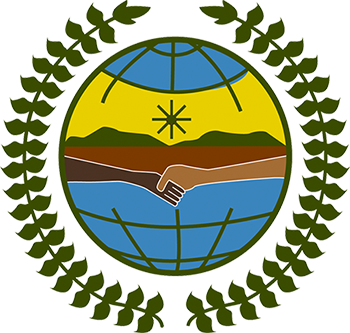Responses
The Government of Mexico reports: 6. In 2008, the Programme of Alternative Tourism in Indigenous Areas supported the implementation of 190 ecotourism and rural tourism projects, with a budget of 157.5 million pesos, aimed at rehabilitating, conserving and ensuring sustainable use of the natural resources and attractions in indigenous regions, and their cultural heritage. To support that Programme, 50 alternative tourism destinations in indigenous areas were advertised and promoted in 2008. 7. The Project on Management and Conservation of Natural Resources in Indigenous Areas promotes joint conservation work with agencies and bodies of the Federal, state and municipal public administration, to cooperate in the development
and participation of indigenous communities in the preservation of biodiversity, the environment and the natural resources in their territories and regions. 8. The Programme of Promotion and Development of Indigenous Cultures,
implemented by CDI, is a strategy for giving effect to the policy of recognizing the multicultural composition of the nation, the right of indigenous peoples to preserve and enrich their languages, their knowledge and the elements that comprise their culture and identity and the right to determine their ways of living with one another and their social, economic, political and cultural organization. At December 2008, 38.84 million pesos had been allocated to support the implementation of 807 cultural projects by indigenous organizations in 768 localities in 26 states, benefiting 14,036 indigenous people — 9,011 men and 5,025 women.
The Government of Bolivia reports: 6. Bolivia has conducted research with the participation of the social actorscinvolved in development problems relating to climate change, who focused on adaptation measures in two pilot regions at the national level: one in the vicinity of Lake Titicaca, the other in the mesothermic valleys of the Department of Santa Cruz, as part of a process known as “learning by doing”, coordinated and developed by the National Climate Change Programme with rural communities in six municipalities.
7. On the basis of this experience, a multidisciplinary programme entitled “Anthropological considerations and ancestral knowledge” is being incorporated in the National Mechanism for Adaptation to Climate Change, with the aim of
identifying the reasons for erosion based on ancestral knowledge of practices which may be relevant in adaptation to climate change.
8. A further success has been the development of local adaptation strategies in Chipaya indigenous communities, in which indigenous actors revive ancestral practices to tackle climate change. The project was carried out in the context of the National Climate Change Programme Five-Year Plan.
9. The Government of Bolivia has been conducting consultations with social organizations, in particular with indigenous peoples, and formulating national positions on a participatory basis with regard to the United Nations Framework Convention on Climate Change, in preparation for the fifteenth Conference of the Parties, to be held in Copenhagen, Denmark, in December 2009.
The Government of Bolivia reports: 31. With regard to the protection of the natural balance in which indigenous peoples live and work, article 342 of the new Constitution provides that “the State and the population shall be bound to conserve, protect and sustainably use natural resources and biodiversity and to maintain the balance of the natural environment”. Indigenous peoples’ rights to the exploitation of natural resources in their territories are recognized in article 304, paragraph 3, of the new Constitution, which provides that indigenous peoples have exclusive jurisdiction over the “management and administration of renewable natural resources, in accordance with the Constitution”. On the rights to the flora and fauna in those territories, article 352 of the new Constitution provides that “citizen participation in the process of environmental management shall be guaranteed and the conservation of ecosystems shall be promoted ... Consultations with indigenous and aboriginal farming nations and peoples shall be conducted in accordance with their rules and procedures”.
The Government of Spain reports on the II Latin American Meeting of Local Governments of Indigenous Territories, which was financed by Spain and had as its special theme "Water and local development with identity." The meeting focused on management of water resources.
The Government of Colombia reports on two projects under the Clean Development Mechanism that have to do with indigenous communities. The report of Colombia also highlights the role of indigenous territories (resguardos) and national parks in mitigating climate change by preserving forests. This is especially the case in the Amazon Region and the Sierra Nevada de Santa Marta. The report also mentions seven porjects on climate change adaptation that address indigenous peoples and their livelihoods.
 Welcome to the United Nations
Welcome to the United Nations
